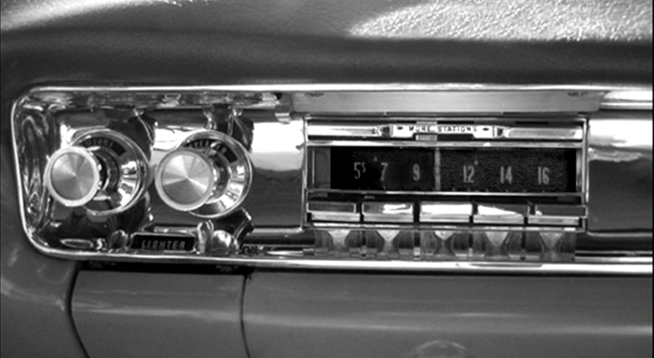
Did you know you can copyright sound?
In a world where IP – or intellectual property – is becoming more and more important, it is possible to lock in a brand’s “aural status” – its sound signature.
In a story in The Drum by Katie Deighton, it turns out Zippo has been granted what’s known as a “soundmark” – joining MGM’s lion, Intel’s chimes, and the Jolly Green Giant’s “Ho, ho, ho” as sounds recognized and protected by the U.S. Copyright Office.
Zippo has been working on “soundmarking” its familiar sound since 1999, but ran into legal hurdles along the way. It wasn’t until this year they finally cracked through, making its ownership of its signature official. It was an arduous process, as company attorney Beth Seals set out to find more than 2,000 examples in films, TV shows, and other pop culture of the Zippo sound. From “Pulp Fiction” to the Broadway show “Stomp,” those ubiquitous lighter sound effects has been used by directors and producers because it is iconic.
You may recall one of the original apps iPhone offered up in its App Store when it opened a decade ago was the Zippo Lighter – a clever gimmick that showed off your  new smartphone and made you the life of the party – for at least a few minutes.
new smartphone and made you the life of the party – for at least a few minutes.
But why would a company that’s been around for 86 years go through all the effort, expense, time, and aggravation to make the ownership of its “soundmark” official? According to Lucas Johnson, a Zippo marketing and branding executive, new voice technology played an important role in the company’s calculus:
“It certainly made sense with everything that’s going on [around voice and smart speakers] to re-examine the application. We recognized the increase in importance – or at least the increased visibility – of a [brand’s sound] among the general population. We won’t centralize marketing around that sound … but this will certainly play a part in future marketing because it is so iconic and so well-known.”
Radio broadcasters should be thinking along these same lines because embedding a sound in the audience’s collective head isn’t just a cool idea, it’s a smart strategy in a radio landscape where voice and top-of-mind awareness will only become more important with each passing year.
We wrote a blog post last year – “The Power of the Audio Signature” – about a radio station’s ability to not just emblazon its call letters and logo in the brains of listening audience, it’s the “sound signature” that may have more lasting value in a world where Alexa, Siri, Cortana, and the Google Assistant become the virtual “tour guides” for growing legions of listeners.
I was lucky enough to work for a station with a great audio signature, my alma mater – WRIF in Detroit. It all started with afternoon drive icon, Arthur Penhallow, who coined the phrase “BABY!” as an enthusiastic “soundmark” that listeners parroted back every time Art or the station was mentioned in conversation. People loved imitating Arthur, adding to the station’s mystique:
“BABY!” become the exciting climax to the station’s highly memorable “Remarkable Mouth” series of Chuck Blore-produced commercials back in the 80s, as well as adorning the backs of thousands of bumper stickers all over the Metro Detroit area. A “signature sound” provides recognition and recall unlike anything I’ve witnessed before or since in radio.
In a world where search tools – typing on a laptop, texting on a smartphone – will become “old technology” before we know it, top-of-mind recognition will become even more important to discovery of radio stations and other media. And that’s where the “signature sound” comes into play. Embed a sound in the crania of consumers, and you’re closer to achieving special level of recognition and brand awareness.
How many radio stations can you think of that don’t just have a memorable name or logo – but have also effectively used audio to brand themselves? Chances are you can count them on one or two hands, and yet as Zippo and other brands have learned, “soundmarks” are going to become even more important as voice becomes the conduit to content.
Imagine a world where your car radio pushbuttons – now known as presets – take a literal back seat to voice in cars – radio’s #1 listening location. Busy, multi-tasking drivers (or passengers in Ubers or autonomous cars) will have to recall your station brand in order to call it up.

If that sounds a lot like how radio broadcasters gamed the Arbitron and Nielsen diary methodology, then you have an understanding of how ironic voice technology’s impact on listening will be in the not-too-distant future. In a media environment that becomes increasingly about getting the attention of brain-addled consumers, a “signature sound” is your best friend.
As Zippo’s Johnson reminds us, “Our goal is to do interesting things where consumers talk about us.”
That should be our goal, too.
Gotta light?
- Can Radio Afford To Miss The Short Videos Boat? - April 22, 2025
- Media And Technology In 2025: Believe It Or Not! - April 18, 2025
- In Radio, You Just Never Know - April 17, 2025




If they talk about it, they stay tuned! Thank you, Fred.
Thank you, Clark!
Fred, this is so “spot on”…from the Imus “duck quack”…every time he did a time check, to the 4 tones designating that “intel’s inside” …sound signatures are critical for success in a very competitive mind branding world.
Agree, agree, Scott. Amazing how they help us recall brands we know and love. Thanks for the comment.
I love that the Weather Channel used to intro their “Local On The 8’s” with “Now, your local forecast, accurate and dependable, because we show it on the 8’s of every hour. Your local forecast…on The Weather Channel.”
And now, it’s a simple 4-note sounder. You hear that, and you know exactly what’s coming.
(Of course, nowadays, they only now seem to do it at :18 and :48.)
I’ve also appreciated some past examples in Philadelphia radio. WMGK used to have 3 guitar strums that went with “M…G…K.” WISX, when it was “My 106.1”, had some sort of twinkly-lazer 4-note chime thing that they would play in between songs, with no actual mention of the station name. Sounded very sophisticated. And, let’s not forget the very memorable “Bllllllllliiiinnnnngggg” from the former WYXR “Star 104.5” of the 80’s.
Good examples – I wish there were more of them. KOIT’s San Francisco trolley sound effect is another. Thanks, DC.